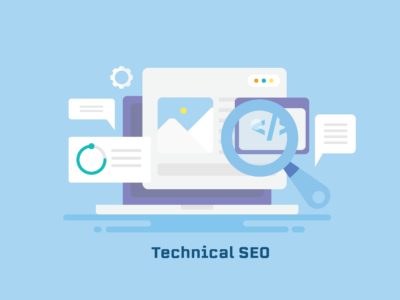This post is Stage 4 in our complete guide to search engine optimization.
Click here for the Full SEO Guide.
On-page SEO is one of the many vital aspects of ensuring that your campaign will do well. As its name suggests, it focuses on the different parts you can optimize on your live web pages, like formatting, content, images, and more. The goal of on-page SEO is to create a search engine-friendly website. The great bonus is that it also organizes your content in an practical way for your readers.
In the fourth part of this blog post series, we’ll be discussing what the different on-page SEO ranking factors are, as well as the best practices for each. Let’s begin.
On-Page SEO Ranking Factors
-
Keyword Placement
The importance of keywords for SEO should come as no surprise to experienced marketers. That’s why it’s critical to be diligent during the keyword research process. At this stage, your target keywords should already be optimized to match the search intent of your target audience.
There are a few strategic spots to place your keywords all over your blog post—not just in the first 100 words of your text. This helps Google recognize your relevancy to your industry or niche.
-
Title tag – Placing your keyword in the title tag is probably the most crucial step. If possible, place the keyword at the start of the title tag.
-
URL – Including your keyword in your URL slug is another great relevancy signal for search engines.
-
Meta description – Mention your keyword in the excerpt of your blog post at least once.
-
Page content – Writing your keyword naturally throughout the body of your blog post or web page is good SEO practice. The operative word here is naturally—you don’t want to overstuff your text with the keyword and get penalized in the process.
-
URL
Let’s take a look at these two examples below:
URL 1: http://www.content.org/url/url-writing-tips
URL 2: http:///www.content.org/17/blog763459
Based on those two examples alone, you can already guess which has a better URL structure. (Yes, it’s the first example.) Writing your URLs properly will allow search engines to index and identify the content your page is discussing. That way, it can show up in relevant searches for a specific topic. Include your keywords and keep it concise—short URLs rank better in Google.
URLs also show the hierarchy of information on your website. For instance, in the example above, the topic “URL writing tips” was from the category page “URL.” This helps search engines do their job better by including this page in a search for “how to write a URL.”
-
Content
Yes, content affects SEO. Your content will be the heart and soul of most of your digital marketing strategies—SEO included. Google has its criteria of what passes as excellent content on the web, namely: uniqueness, length, and value.
-
Uniqueness – Are you contributing anything new to the library of articles written about the same topic? This doesn’t just refer to avoidance of plagiarism; it also relates to authenticity.
-
Length – This refers to how many words your article has. If you want to showcase your expertise, it will be natural for you to create long-form content that demonstrates your knowledge. This is always relative to your industry and the issue at hand.
-
Value – How many people are engaging with your post? The higher the number, the more Google recognizes that it’s relevant and helpful to the people it’s trying to reach.
If you think about it, creating content with these factors in mind will come to you naturally as long as you put your customers’ needs at the forefront. A good goal is to come up with one-of-a-kind articles that range anywhere from 1,000 to 2,000 words—as long as the topic calls for it. Lastly, as long as your target audience found it relatable and targeted towards their problems, they’ll most likely share your content.
-
Formatting
Help your audience read your content easier by formatting your text correctly. No one wants to see huge blocks of plain text—it’s not pleasing to the eyes. These formatting tags are also a huge help for your SEO. Here’s what you can do:
-
Include an <H1> tag in your blog post title.
-
Use the <H2> tag for subheadings and use your keyword at least once here as well.
-
Don’t forget to convey emotions with bold, italics, and underline.
-
Make your links distinguishable and in a different color.
-
Break down long paragraphs into blocks of 3 to 4 lines each.
-
Linking Strategy
Use a healthy amount of internal and external links that cite references like case studies and statistics whenever relevant. Not all topics will give you the opportunity to do this but use this strategy as much as you can.
Internal linking is as simple as connecting related blog posts or pages from another post by hyperlinking URLs to keywords.
- It aids in website navigation
- It helps define the architecture and hierarchy of a website
- It distributes page authority and ranking power throughout the site
Internal links signal to search engines that your post is about a particular keyword and increase your chances of appearing in search results for that keyword. At the same time, it keeps your reader in your website if they choose to read on.
On the other hand, according to Backlinko, including outbound links that are related to your webpage’s industry helps Google identify the topic of your post. Be careful to go overboard though—too many outbound links can hurt your rankings in retrospect.
-
Image Optimization
Don’t forget your images! SEO isn’t only for text, but other media formats as well. Uploading something random will hurt your SEO standing. Here’s how you can make sure your photos are helping your content succeed:
-
Use unique images that accurately depict the emotion or message of the article to your audience. It could be a screenshot of an application you’re talking about, a relevant (and non-generic) stock photo you found on the internet, or something original that you shot or edited.
-
Have proper naming conventions that describe what’s going on in the photo. Instead of uploading a file called “image1.jpg,” try something like “people in a business meeting.jpg.”
-
Upload high-quality images. If your photos have poor resolution, it won’t look professional on your website.
-
Reduce the size of your images. Your photos may be top quality, but if they’re too large, then the loading speed of your site could get compromised. Remember that each additional second of load time can result in up to a 5% increase in bounce rates.
-
Write captions that are descriptive; if possible, reference it to a section in your blog post and use your keyword in the caption.
-
Last but not least, don’t forget to add alt text to your images. This helps search engines to understand better what that image is about. Alt text is also helpful for telling users what the image is in cases where the image doesn’t load properly.
-
Website Design
Have you transitioned to a mobile-friendly website? Google penalizes sites that aren’t mobile-friendly. With almost 2.5 billion smartphone users in the world, it’s imperative for businesses to adapt to the smaller screen that users take with them on-the-go.
Another thing to consider is the overall responsiveness or UI of your website. Are the buttons easily distinguishable? Is the menu easy to navigate? Is the font-size readable? Give your mobile users the same experience as those who would look you up in a desktop computer—and make sure that your website is optimized in each platform.
The idea with UX design for SEO is to keep visitors engaged on your website as much as possible to reduce bounce rates, which is one of the indicators that Google uses to gauge site/page quality.
-
Page Speed
Page speed essentially refers to how long a particular page on your website takes to load. This is a really important factor that can make all the difference when it comes to good/bad user experiences. We should all know by now that excessive load times can also have a significantly negative impact on your conversion rates as a whole.
Here are some of the most common tactics to improve page loading times:
- Enable compression to reduce the size of your HTML, CSS, and JavaScript files that are larger than 150 bytes.
- Reduce redirects to keep HTTP request-response cycle times at a minimum.
- Minimize the use of blocking JavaScripts to reduce the amount of potential network requests made during website loading.
- Improve server response times by removing bottlenecks to keep it under 200ms.
- Utilize content delivery networks to help distribute your website across a range of geographically diverse data centers.
Conclusion
As you’ve guessed by now, on-page SEO requires meticulous attention to detail. By following the above best practices, you’ll be able to consciously apply these factors to your content and website moving forward.
One more thing: On-page strategies provide the best possible results when paired with off-page SEO as well. We’ll talk about that soon in the next installment of our SEO Guide series, so stay tuned!






